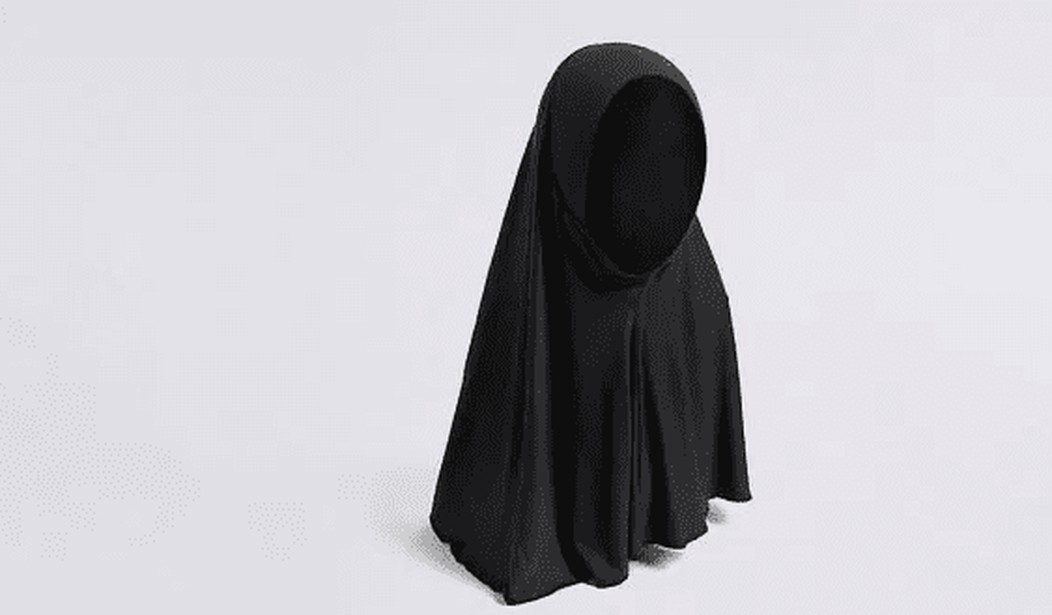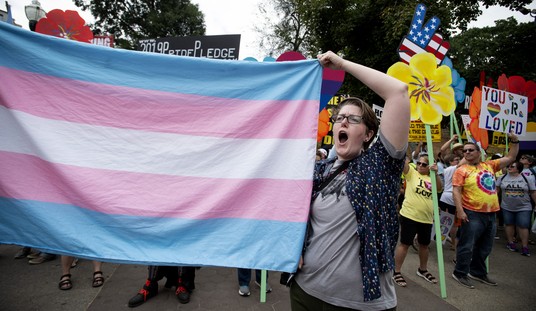The U.K. these days is full of recalcitrants. Take all those rabble who, ignoring the wise counsel of the entire British establishment, had the audacity to vote for Brexit. Or the countless peasants who took to the streets this summer to show their support for that loathsome blackguard Tommy Robinson. Or all those troublemakers who criticize Islam online, forcing the poor police to send officers around to knock on their doors and order them to cut it out.
In this disobedient atmosphere, one institution stands out for its fealty to contemporary British values. Marks & Spencer, the giant retail food and clothing chain, has been around since 1884 but has striven admirably to stay up to date. A few years ago, for instance, in the wake of “consultations with religious groups,” M&S gave Muslim employees permission to deny service to customers buying alcohol or pork products. (By contrast, the official guidelines issued by another major chain, Sainsbury’s, said “there was no reason why staff who did not drink alcohol or eat pork for religious reasons could not handle the goods,” while yet another big chain, Tesco, “said it ‘made no sense’ to employ staff on a till who refused to touch certain items for religious reasons.” Islamophobes!)
Now M&S is being harassed again for showing proper deference to Islamic norms. Among the items it is hawking as part of its selection of “essential” school supplies are hijabs for young girls. How young? Different media report different figures. The Telegraph says that the hijabs are designed for girls aged nine and up. The radio station LBC says they fit girls as young as three. So does “secular Muslim” activist Maajid Nawaz, who in a tweet accused M&S of “facilitat[ing] medievalism.” The question of just what age the smallest of these hijabs are intended for was taken up, but not decisively settled, in an article in Metro, although an exchange of tweets between customers and helpful M&S employees made clear that the “large” size hijab — they come in “large,” “medium,” and “small” — is meant for “a 6-8 year-old,” and the Express noted that “online reviews suggest a ‘medium’ would fit a four-year-old.”
As it happens, M&S rolled out its sizzling new line of kiddie hijabs this summer in response to a demand from a number of schools for which it serves as a supplier of uniforms. (The chain, incidentally, already sells a “burkini” bathing suit, perfect for Muslim women who want to go for a dip without being savagely butchered to death by devout male members of their families.) The point of the hijab, of course, is to protect females from the prying eyes of males. In our proud new multiculturally sensitive West, any woman who doesn’t put one on every time she leaves the house is, quite simply, asking to be ravished. So why not deck out your little girl in one of these garments as early as possible? Look at it this way: she can either wear a hijab or be viewed by all the little boys in day care as a filthy Westernized slut. Which do you prefer?
Alas, Maajid Nawaz, that busybody, wasn’t the only one to make an unpleasant stink over M&S’s wonderful new line of hair-hiding toddlerwear. Some silly creature who “has lived through gender apartheid and forced hijab” in Iran criticized M&S online for selling the baby hijab, calling it an example of “gender apartheid.” As if that were a bad thing! Another obvious bigot posed a question on M&S’s Facebook page: “How could you profit from something that promotes degradation to woman and children?” Of course, the only thing “degrading” to females is letting them outside of the house without a male relative as chaperone.
As if all that Islamophobic whinging weren’t enough, some wet blanket of an education expert named Alan Smithers told the Telegraph: “M&S are obviously responding to the market, but I am surprised that hijabs are to be part of the school uniform, because in schools I think we have the best hope of developing an integrated society with a common set of values. The hijab does tend to set children apart.” Integrated society? Common values? What country is this Smithers person living in? Nowadays, in more and more parts of Britain, not wearing a hijab is what sets you apart. For British women, going hijab-less is becoming more and more uncool — and, in these increasingly pious times, let’s face it, more and more dangerous. Besides, as so many wise British politicians have so patiently explained to us, we shouldn’t be aiming for integration and common values — we should be celebrating difference and cherishing diversity. Right?









Join the conversation as a VIP Member